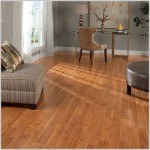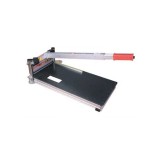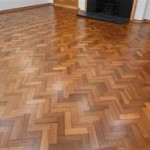Bamboo Flooring Types: Essential Aspects to Consider
Bamboo flooring has gained immense popularity in recent years due to its exceptional durability, sustainability, and aesthetic appeal. It is an eco-friendly alternative to traditional hardwood flooring, offering a wide range of styles and finishes to complement any home décor. Understanding the different types of bamboo flooring is crucial to make an informed decision that meets your specific needs and preferences.
Horizontal Bamboo
Horizontal bamboo flooring is constructed by bonding the bamboo stalks horizontally, creating a flat and even surface. This type of flooring offers a more traditional hardwood-like appearance and is known for its strength and resilience. The bamboo stalks are compressed and glued together under high pressure, resulting in a durable and stable product.
Vertical Bamboo
In vertical bamboo flooring, the bamboo stalks are placed vertically and bonded together. This orientation gives the flooring a more unique and distinctive look, resembling exotic hardwood species. Vertical bamboo is slightly less dense than horizontal bamboo, but it provides exceptional durability and is resistant to scratches and dents.
Strand Woven Bamboo
Strand woven bamboo flooring is a premium option that offers exceptional strength and stability. It is made by shredding bamboo stalks into fine strands, which are then woven together and compressed under high pressure. This process creates a dense and durable flooring material that is highly resistant to wear and tear. Strand woven bamboo flooring is often considered the most luxurious type of bamboo flooring, and it is available in a wide range of colors and finishes.
Engineered Bamboo
Engineered bamboo flooring is constructed with a core layer of bamboo stalks, which is topped with a thin layer of solid bamboo. The core layer provides stability and moisture resistance, while the solid bamboo top layer offers the desired aesthetic appeal. Engineered bamboo flooring is less expensive than solid bamboo flooring, and it is suitable for areas with moderate moisture levels.
Solid Bamboo
Solid bamboo flooring is made from 100% bamboo stalks, providing the most natural and authentic appearance. It is exceptionally durable and resistant to scratches and dents, making it an excellent choice for high-traffic areas. Solid bamboo flooring is more expensive than other types, but its beauty and durability make it a worthwhile investment.
Conclusion
Choosing the right type of bamboo flooring depends on your specific needs, preferences, and budget. Each type offers unique advantages, such as durability, aesthetics, and price. By understanding the different options available, you can make an informed decision that will enhance the beauty and functionality of your home for years to come.

Bamboo Flooring Types Varieties Styles Solid Vs Strand Woven

What Are The Diffe Types Of Bamboo Flooring Company

Bamboo Flooring Types Of

Bamboo Flooring Woodworks

Bamboo Flooring Pros And Cons Diy Family Handyman

Solid Surface Carbonized Natural Strand Woven Bamboo Flooring China Floor Made In Com

What Are The Diffe Types Of Bamboo Flooring Company

Bamboo Flooring Understanding The Options Buildinggreen

Bamboo Flooring Pros And Cons Forbes Home

Bamboo Flooring Pros And Cons Ashmore Carpets
Related Posts








